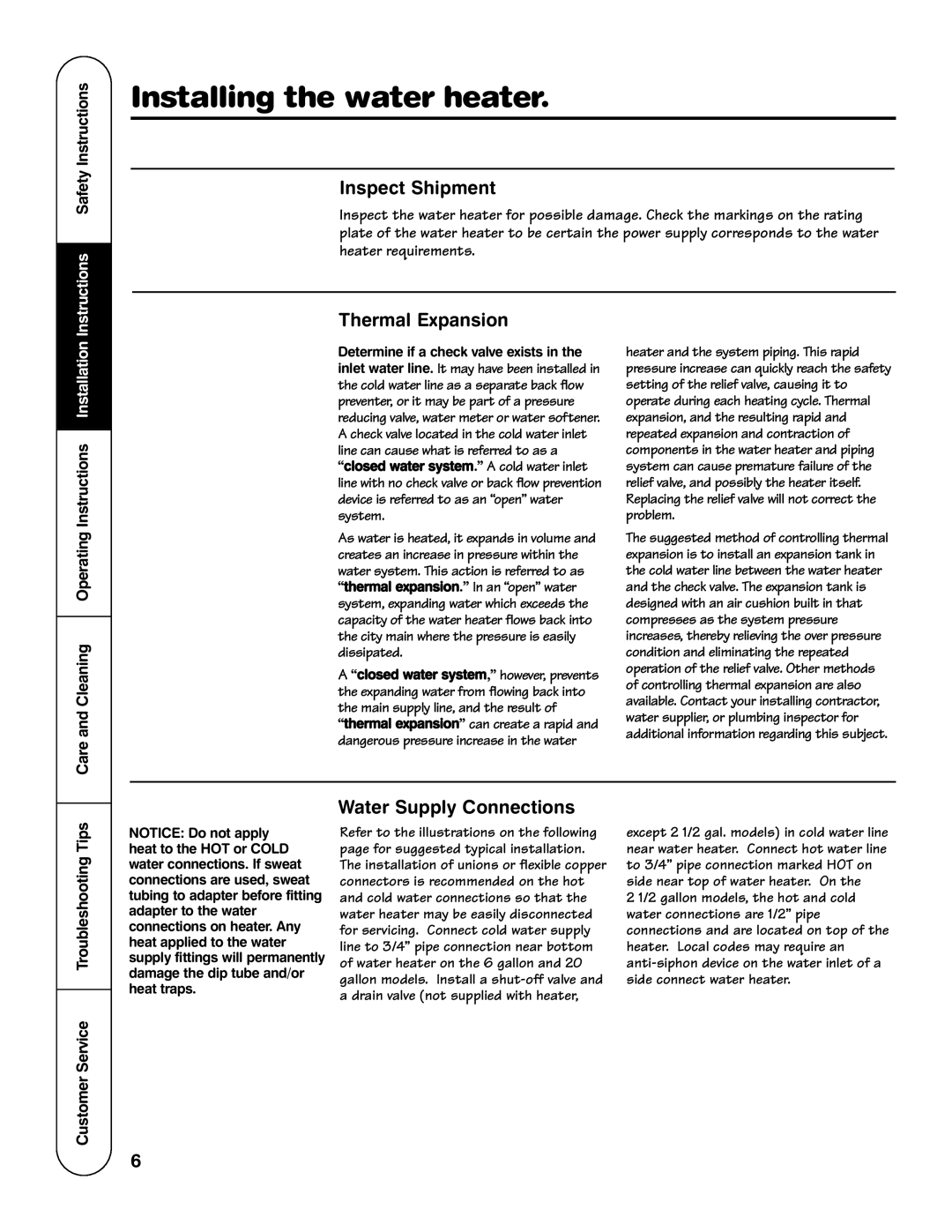AP12169-5, GE Series specifications
The GE Series AP12169-5 represents a robust and versatile line of products designed by General Electric to cater to the diverse needs of modern industries. These units are characterized by their high efficiency, advanced technology, and user-friendly design, making them ideal for various applications, including industrial automation, HVAC systems, and power generation.One of the standout features of the GE Series AP12169-5 is its energy efficiency. The product incorporates state-of-the-art energy-saving technologies that significantly reduce power consumption while optimizing performance. This aspect not only contributes to lower operational costs but also supports sustainability initiatives by minimizing the carbon footprint.
In addition to energy efficiency, the AP12169-5 series is equipped with advanced monitoring and control capabilities. These features allow for real-time performance analysis, thereby enabling operators to make informed decisions and implement timely adjustments. The built-in diagnostic tools assist in predictive maintenance, reducing downtime and enhancing the longevity of the equipment.
The GE Series AP12169-5 emphasizes ease of integration within existing systems. It supports various communication protocols, ensuring compatibility with a wide range of devices and frameworks. This flexibility facilitates seamless upgrades and expansions, making it an attractive option for businesses looking to enhance their operational efficiency without overhauling their entire infrastructure.
Another notable characteristic of the GE Series AP12169-5 is its durability. Built with high-quality materials and utilizing advanced manufacturing techniques, these units are designed to withstand harsh environments and demanding conditions. This reliability ensures continuous operation, which is crucial in industries where downtime can result in significant losses.
The user-friendly interface of the AP12169-5 also deserves mention. Its intuitive controls and comprehensive display simplify the operation and monitoring processes, making it accessible for personnel with varying levels of technical expertise. This feature translates to less training time and quicker adaptation to the system.
In summary, the GE Series AP12169-5 exemplifies a harmonious blend of efficiency, advanced technology, and robust durability. With its focus on energy savings, ease of integration, real-time monitoring, and user-friendly design, this product series is well-positioned to meet the evolving demands of industries worldwide. General Electric continues to demonstrate its commitment to innovation and excellence through the development of solutions that drive productivity and sustainability in the modern industrial landscape.

